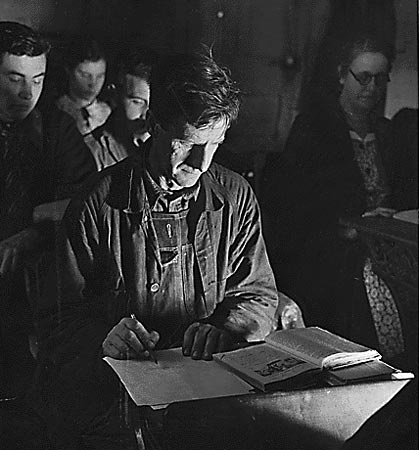Works Progress Administration
United States history
also called (1939–43) Work Projects Administration
 work program for the unemployed that was created in 1935 under U.S. President Franklin D. Roosevelt's (Roosevelt, Franklin D.) New Deal. While critics called the WPA an extension of the dole or a device for creating a huge patronage army loyal to the Democratic Party, the stated purpose of the program was to provide useful work for millions of victims of the Great Depression and thus to preserve their skills and self-respect. The economy would in turn be stimulated by the increased purchasing power of the newly employed, whose wages under the program ranged from $15 to $90 per month.
work program for the unemployed that was created in 1935 under U.S. President Franklin D. Roosevelt's (Roosevelt, Franklin D.) New Deal. While critics called the WPA an extension of the dole or a device for creating a huge patronage army loyal to the Democratic Party, the stated purpose of the program was to provide useful work for millions of victims of the Great Depression and thus to preserve their skills and self-respect. The economy would in turn be stimulated by the increased purchasing power of the newly employed, whose wages under the program ranged from $15 to $90 per month.During its eight-year existence the WPA put some 8.5 million people to work (over 11 million were unemployed in 1934) at a cost to the federal government of approximately $11 billion. The agency's construction projects produced more than 650,000 miles (1,046,000 km) of roads; 125,000 public buildings; 75,000 bridges; 8,000 parks; and 800 airports. The Federal Arts Project, Federal Writers' Project, and Federal Theater Project—all under WPA aegis—employed thousands of artists, writers, and actors in such cultural programs as the creation of art work for public buildings, the documentation of local life, and the organization of community theatres. The WPA also sponsored the National Youth Administration, which sought part-time jobs for young people.
In 1939 the Works Progress Administration altered its name to Work Projects Administration. In that year increasing charges of mismanagement and of abuse of the program by workers led to a reduction in appropriations, and a strike by construction workers against wage cuts was unsuccessful. In 1943, with the virtual elimination of unemployment by a wartime economy, the WPA was terminated.
- José dos Santos
- José Duarte Ramalho Ortigão
- José Echegaray y Eizaguirre
- José Emilio Pacheco
- José Enrique Rodó
- José Eustasio Rivera
- José Evaristo Uriburu
- José Ferrer
- José Figueres Ferrer
- José Francisco de Isla
- José Félix Uriburu
- José Gaspar Rodríguez de Francia
- José Gervasio Artigas
- José Guadalupe Posada
- José Gutiérrez Solana
- José Gálvez, Marqués De La Sonora
- José Hernández
- José Joaquín Fernández de Lizardi
- José Joaquín Olmedo
- José Julián Martí
- José Lezama Lima
- José Limón
- José Lins do Rego
- José Luis Rodríguez Zapatero
- José Luis Sert